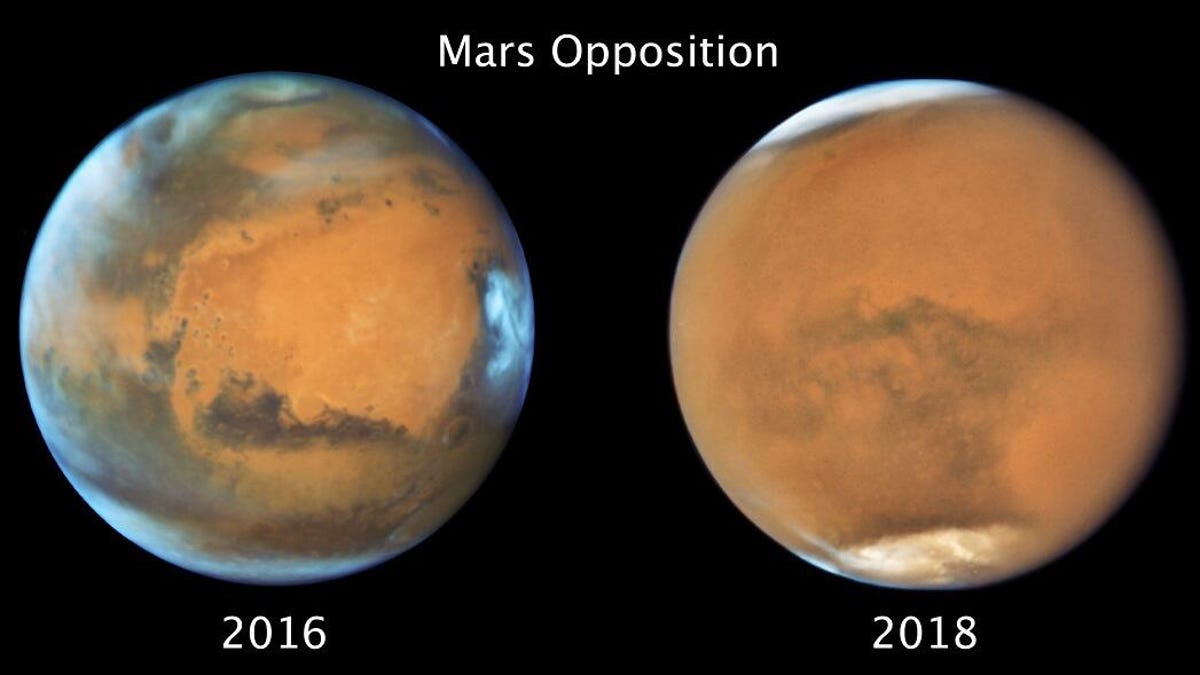A global dust storm on Mars canceled winter on the red planet
When a dirty blanket enveloped the Martian disc, spring came early in the south.

Images of Mars under clear conditions (left) and during the 2018 Global Dust Storm.
In June 2018, a number of small dust storms on Mars converged to form one massive, swirling squall that engulfed the entire planet, practically hiding its entire surface from the view of spying orbiters. Now researchers say the mega-storm also squashed an entire season, bringing the southern winter to an abrupt and early end.
You may recall this as the dust storm that dealt a death blow to NASA's solar-powered Opportunity rover.
"This was a perfect opportunity to investigate how global dust storms impact the atmosphere at the Martian poles, which are surrounded by powerful jets of wind in winter," explained Paul Streeter of the UK's Open University, in a statement.
Streeter and colleagues from the university, NASA and the Russian Academy of Sciences looked at data from Martian orbiters and a climate model of the planet to examine the impacts of the storm on the Martian atmosphere. They found the storm had vastly different effects on the southern and northern halves of the planet.
The storm moved more dust toward the southern pole, destroying a vortex of cold air and bringing an early spring to the hemisphere. It's almost as if the blanket of dust that appeared to cover the planet actually had the same warming quality as a real blanket.
The storm had less of an impact in the northern hemisphere, where seasons progressed nearly as expected.
Streeter presented the findings Friday at the virtual National Astronomy Meeting of the UK Royal Astronomical Society. He says Martian dust storms like the one in 2018 will continue to be events worth watching closely.
"It has implications for how dust is deposited at the north and south poles and our understanding of the planet's climate history."
Follow CNET's 2021 Space Calendar to stay up to date with all the latest space news this year. You can even add it to your own Google Calendar.

